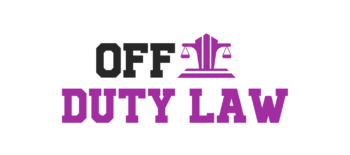Client confidentiality is a cornerstone of ethical practice in many professions, including law, medicine, psychology, and finance. It is essential for establishing trust between professionals and their clients, allowing individuals to freely seek assistance without fear of their personal information being disclosed. However, there are instances where the duty to maintain client confidentiality conflicts with moral obligations, raising ethical dilemmas that professionals must navigate carefully.

The Importance of Client Confidentiality
Client confidentiality serves as a vital component of establishing a safe and secure environment for individuals seeking professional help. It allows clients to open up without reservation, enabling professionals to gain a comprehensive understanding of their situation and provide appropriate guidance. This confidentiality extends to all information shared during the course of the professional relationship, ensuring that personal details remain strictly confidential.
Professionals must adhere to strict ethical guidelines and legal obligations to protect client confidentiality. Breaching this trust can lead to severe consequences, including damage to the professional’s reputation, legal sanctions, and the erosion of trust within the profession as a whole.
Conflicts between Client Confidentiality and Moral Obligations
Although client confidentiality is paramount, there are scenarios where professionals may find themselves facing moral obligations that conflict with maintaining confidentiality. For instance, a therapist may learn that their client is engaging in harmful activities or poses a threat to themselves or others. In such cases, the professional is torn between their duty to protect the client’s privacy and their moral obligation to prevent harm.
Professionals must carefully assess the situation, considering the potential harm that may come from breaching confidentiality versus the potential harm that may arise from maintaining it. They must also consider any legal requirements or guidelines that may exist, as these can vary depending on the profession and jurisdiction.
Navigating the Ethical Dilemma
When facing an ethical dilemma between client confidentiality and moral obligations, professionals should follow a systematic approach to ensure the best possible outcome:
- Evaluate the situation: Professionals must assess the seriousness of the potential harm and the likelihood of it occurring.
- Consult with colleagues: Seeking advice from trusted colleagues or supervisors can provide valuable insights and alternative perspectives.
- Explore legal requirements: Understanding the legal obligations and guidelines specific to the profession and jurisdiction can help inform the decision-making process.
- Obtain informed consent: If possible, professionals should discuss the potential breach of confidentiality with the client and seek their consent before taking any action.
- Document the decision-making process: Professionals should keep detailed records of the ethical dilemma, the steps taken, and the reasoning behind the final decision.
The Role of Professional Codes of Ethics
Professional associations often provide codes of ethics that guide professionals in navigating the complexities of client confidentiality and moral obligations. These codes outline general principles and guidelines that professionals should follow when faced with ethical dilemmas.
Professionals should familiarize themselves with the specific code of ethics relevant to their profession and seek ongoing education and training to stay updated on any changes or developments in ethical practice.
Balancing client confidentiality with moral obligations is a complex task for professionals in various fields. While client confidentiality is crucial for establishing trust and promoting open communication, there are circumstances where moral obligations demand a breach of confidentiality. Professionals must carefully assess each situation, considering the potential harm and legal requirements before making an ethical decision. Adhering to professional codes of ethics and seeking guidance from colleagues can provide valuable support in navigating these ethical dilemmas.













